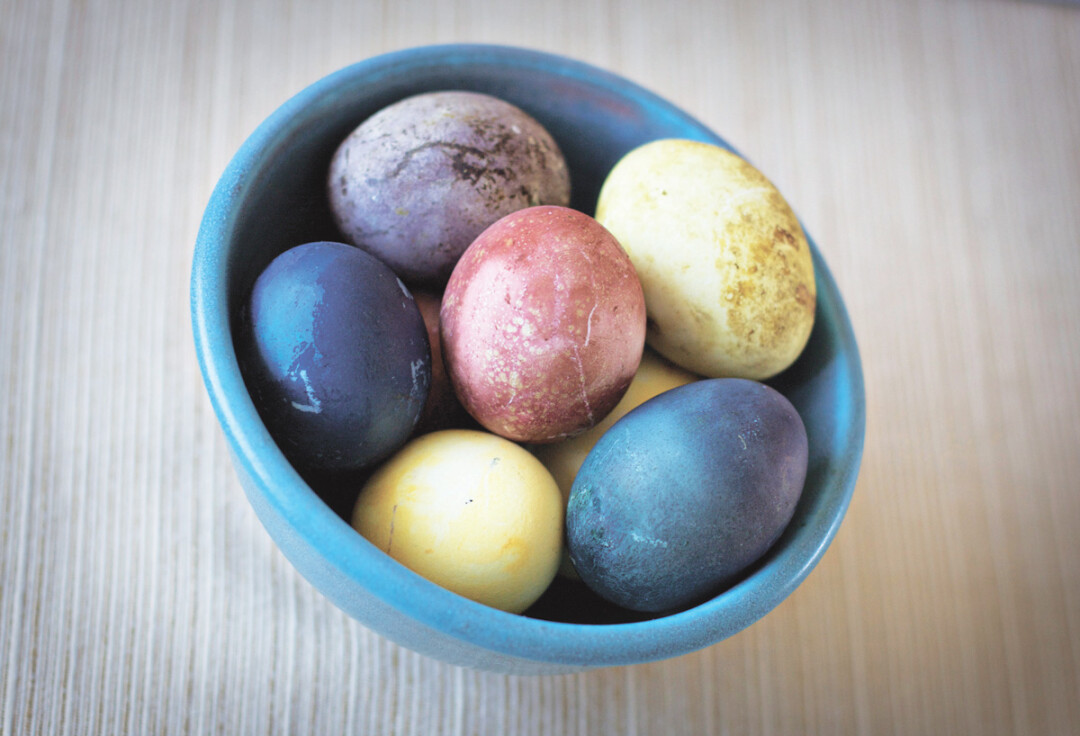Egg-stravagent Natural Easter Egg Dyes
eco-friendly egg-coloring options are sure to win the approval of your kids – and the Easter bunny
Pan Thao |

Believe it or not, we’ve been dunking eggs in colorful baths since the 13th century. This has inspired the creation of many ways to dye and decorate eggs over the years. This Easter, instead of picking up a kit complete with artificial dye and a flimsy wand that barely keeps the egg from dropping, create your own safe and natural dyes – while allowing your child to embrace his or her inner mad scientist.
Your kitchen is full of natural dyes, and you can get just about every color of the rainbow. Kids will love experimenting with all the dye materials and discovering the many different colors that they can create. All that is required is a pot of water, eggs, and a few things from the kitchen. The instructions below will show you how to make the primary colors, which will allow you to mix up more egg-cellent colors as well.
Red
Add 2 cups of water, 2 cups of grated raw beets, and 1 tablespoon of vinegar into a saucepan. Boil for 15 minutes. You can substitute raspberries, pomegranates, and strawberries.
Yellow
Add 3 large handfuls of yellow onion skins and 3 cups of water into a saucepan. Simmer for 15 minutes. If you drink tea, brewing a strong cup or two of chamomile tea will give you a brownish yellow hue. For something a little more vibrant, try 2-3 tablespoons of turmeric boiled in 2 cups of water.
Blue
Boil 1 pound crushed frozen blueberries for 15 minutes. You can also boil 1 cup of red cabbage leaves with 1 cup of water for 15 minutes. The latter dye will look blue on white eggs and green on brown eggs!
You don’t have to limit yourself to the ingredients or methods listed here either. Remember that if it stains your cutting board or fingers, chances are good that it will also dye your eggs. Combining the primary colors above will also create orange, green, purple, and many other colors.
You can either boil the eggs with the dye mixture or pre-boil them on their own and let them soak in the dye later. If you’re looking for uniform colors, strain your dye mixture before soaking your hard-boiled eggs in the liquid. For something a little more tie-dyed or marbled, soak your eggs with the cooked ingredients. The longer you soak the eggs, the darker the color will be. You can also wrap your eggs in onion skin, leaves, herbs, flower petals, or even rice, and hold it all together with a white cloth and a rubber band before boiling them for beautiful patterns. No two eggs will ever be the same again!




















